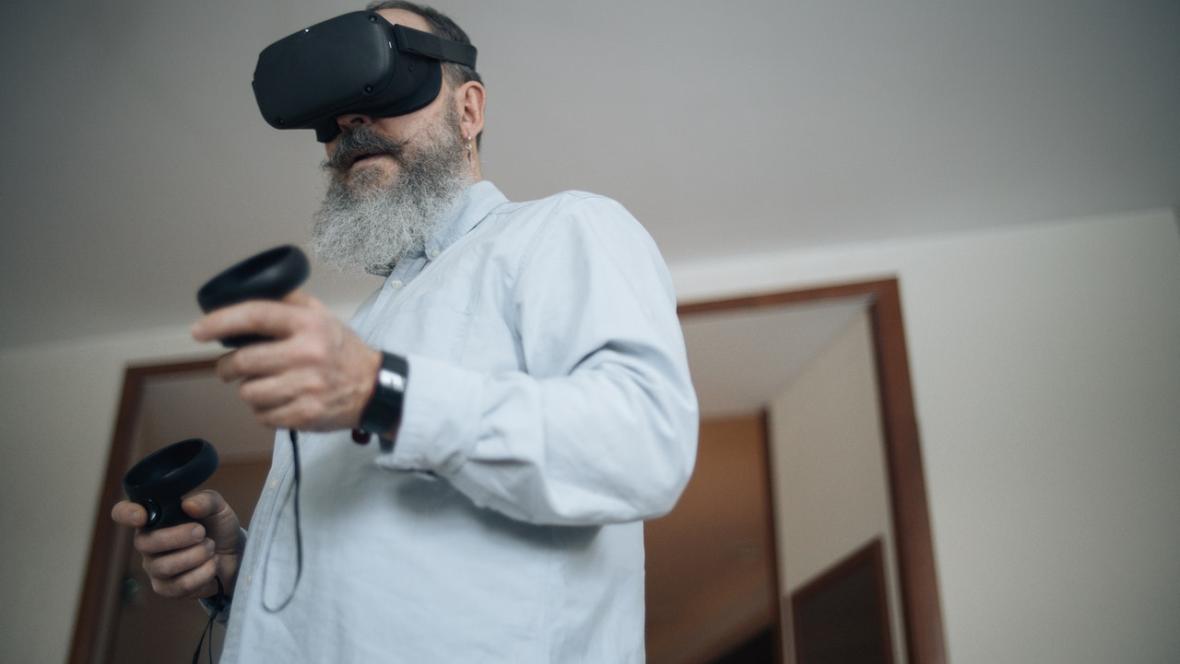Telerehabilitation: Tools to improve quality of life.

Telerehabilitation is a subcomponent of telemedicine, which has been designed to care for patients with various diagnoses, such as those in need of physical or cognitive rehabilitation, these therapies are presented as a concrete manifestation of the advancement of science in the area of health in favour of the care of the elderly and other vulnerable groups.
Telerehabilitation refers to the clinical application of consultative, diagnostic and therapeutic services through two-way interactive ICT, mainly using software and motion sensors.
Telerehabilitation therapies have been achieved through the application of different information and communication technologies (ICT) that have been implemented in various professional sectors. For example, in the area of health, it has made it possible to face several obstacles, such as eliminating the distances of physical space, thus generating benefits in terms of accessibility.
The possibility of improving the quality of life of patients and their carers is undoubtedly the main benefit that telerehabilitation can bring. This is how rehabilitation programmes seek to meet these needs by overcoming geographical, economic and social barriers. Telerehabilitation is also a tool to achieve greater permanence in rehabilitation programmes since, as we have mentioned before, it provides great flexibility.
Health strategy for a long-lived population
According to the INE, on 1 January 2019, there were 9,057,193 elderly people in Spain, 19.3% of the total population. Another fact to bear in mind that shows the progressive ageing of the Spanish population: the average age of the country in 2021 will be 43.8 years, whereas in 1975 it was 33.
Demographic indicators extracted from the website of the INE
These indicators are very similar to those of other developed countries such as Germany and France, a fact that worries their governments, given the socio-health increase that this ageing entails for the public administration, which is why it is necessary to create a health strategy, hand in hand with ICTs, to mitigate the effects of this situation.
The progressive increase in population ageing is evident, so it is essential to review the current model of health service provision and to analyse whether rehabilitation services are really viable for the near future. This is why telerehabilitation is presented as a fundamental tool for a healthcare strategy, providing a flexibility that does not exist in the traditional healthcare system, as well as allowing for the optimisation of healthcare resources.
Another of the main advantages of telerehabilitation is the real possibility it offers patients of intensive treatment when necessary, as well as personalised treatment, leaving behind group sessions, where there is no guarantee that each patient will receive optimal treatment for their diagnosis and thus obtaining a direct improvement in the quality of life of patients.
Telerehabilitation for the elderly
A project carried out in the Balearic Islands, under the coordination of the IBIT Foundation and with the participation of different organisations and research groups called "Telerehabilitation in the elderly". The preliminary study of the project states that in the medium and long term the number of dependent elderly people could become unsustainable for the social and health care system if appropriate measures are not taken.
The technological objective of the presented project consists of the development of a Virtual Rehabilitation Platform that allows the remote monitoring and support of physiotherapy for the elderly and disabled (Rehabitic), facilitating contact between them and the care staff through ICT.
This application is based on a client-server architecture made up of two basic components:
- The Central System: allows the management of rehabilitation therapies and the supervision and communication with patients.
- The Patient's Kit: allows the performance of the exercises and the sending of results.
The main functionalities of the central system are:
-
Creation and management of personalised therapies.
-
Management and supervision of patients.
-
Communication between healthcare staff and patients or their carers.
-
Interoperability with other health information systems.
While the Patient Kit consists of:
-
All-in-one computer with touchscreen display
-
Wireless system for capturing the patient's movement
-
Remote control to start and stop exercises
-
Mobile broadband internet connection
-
Tool kit consisting of the elements necessary to perform the exercises
The portal also offers dynamic information in different formats such as text, image or video, and has a back-office with restricted access for content management by a Therapeutic Team. The use of these technologies, as mentioned above, can favour a more rational use of healthcare resources, reduce hospital stays and reduce the pressure on care services.
Other telerehabilitation tools
Another possible speciality where we can use these tools is cognitive telerehabilitation, where several platforms already exist, such as PREVIRNEC®. This is "a cognitive telerehabilitation platform that offers intensive, personalised and structured rehabilitation" based on each patient's impairment profile and functional capacity after the injury, adjusting the degree of difficulty to the level of success achieved by each patient, so that the treatment is stimulating.
Another existing platform is Play for Health (P4H), which is an open and low-cost telerehabilitation system based on the use of video games and interaction methods to improve physical and cognitive deficits.
An important development in the field of virtual reality rehabilitation is the incorporation of various sensors and feedback devices in training programmes, in addition to the usual optical and inertial measurement units consisting of accelerometers and gyroscopes. These devices confer diagnostic capabilities to Virtual Reality Rehabilitation Systems, making them more than a therapeutic modality.
Other aspects of Telerehabilitation
Due to the SARS-CoV-2 pandemic, many professionals have been forced to paralyse their services due to the limitation brought by the confinement and restrictions given by the different States, however, thanks to these tools, these professionals have been able to adapt their work to a telerehabilitation modality, which has been useful in turn to evaluate its effectiveness.
Thus, longevity can only be considered an achievement to the extent that a dignified life is provided, which is why it is necessary to establish adequate and innovative conditions for this group of the population. It is therefore necessary for governments to establish policies with real objectives that address the ageing process with proper health maintenance, which in turn guarantees a good quality of life, and the application and development of these technologies adapted to the needs of the elderly can be the necessary tool to achieve this.
Resources and bibliography:
-
Araújo, S. N. M., Santiago, R. F., Barbosa, C. N. S., Figueiredo, M. D. L. F., Andrade, E. M. L. R., & Nery, I. S. (2017). Tecnologías orientadas al cuidado del anciano en los servicios de salud: una revisión integradora. Enfermería global, 16(46), 562-595.
-
Barrios, M., Rodriguez, L., Pachon, C., Medina, B., & Sierra, J. E. (2019). Telerehabilitación funcional en entornos virtuales interactivos como propuesta de rehabilitación en pacientes con discapacidad habilitación funcional en entornos virtuales interactivos como propuesta de rehabilitación en pacientes con discapacidad. Revista ESPACIOS, 40(25).
-
Coccaro, E. A. (2019). Realidad virtual y aumentada, su aplicación como nuevas tecnologías en el área neurorehabilitación.
-
Farreny, M. A., Buen, M. C., Aguirrezabal, A., Ferriol, P., Tous, F., & Alcalde, M. A. (2012). Play for health (P4H): una nueva herramienta en telerehabilitación. Rehabilitación, 46(2), 135-140.
-
Monserrat, P. F., Sastre, M. B., Macarro, E. A., de Alarcón Sánchez, P. A., & Balcells, M. F. (2009). TeleRHB: Telerehabilitación en personas mayores. España. Dirección de internet: hilab. ibit. org/healthilab_files/publicacions/TeleRHB_CASEIB09. Pdf.
-
Nuñez Machuca, M. F., Meneses Castaño, C. Y., Penagos, P. T. ., & Beltrán Arias, A. F. (2021). La Telerehabilitación como Estrategia de Atención en Salud. Movimiento Científico, 15(1), 1–7. https://doi.org/10.33881/2011-7191.mct.15104
-
Ordoñez, L. T. (2015). Telerehabilitación como propuesta actual de rehabilitación en pacientes con discapacidad.
-
Serón, P., Oliveros, M. J., Fuentes-Aspe, R., & Gutiérrez-Arias, R. (2020). Efectividad de la telerehabilitación en terapia física: protocolo de una revisión global en tiempos que exigen respuestas rápidas. Medwave, 20(07).
-
Theodoros, D., Russell, T., & Latifi, R. (2008). Telerehabilitation: current perspectives. Studies in health technology and informatics, 131(1), 191-210.


